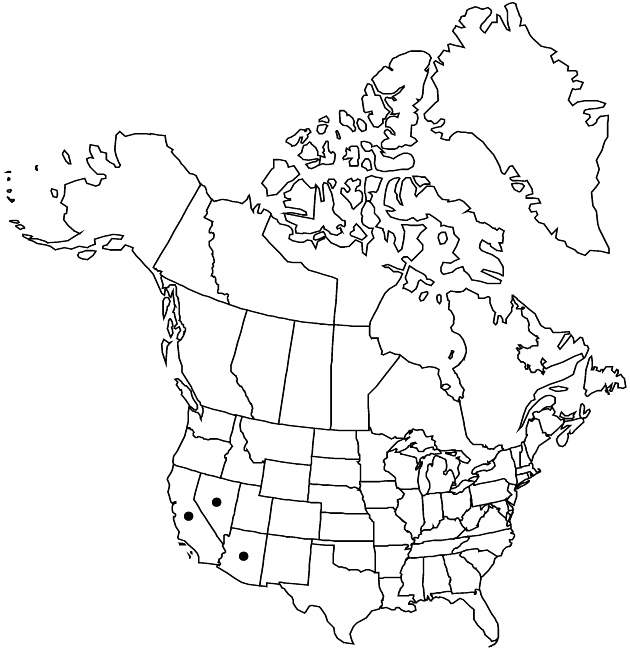Psathyrotes ramosissima
Proc. Amer. Acad. Arts 7: 363. 1868.
Common names: Turtleback
Basionym: Tetradymia ramosissima Torrey in W. H. Emory, Not. Milit. Reconn., 145. 1848
Treatment appears in FNA Volume 21. Treatment on page 417.
Revision as of 21:53, 27 May 2020 by imported>Volume Importer
Annuals or perennials, 3–30 cm; lanate, furfuraceous. Stems erect and spreading, much branched. Leaf blades rounded-deltate to suborbiculate, 8–25 × 8–30 mm, margins toothed. Peduncles 3–50 mm. Involucres broadly turbinate to campanulate, 6–10 mm. Phyllaries 15–24, outer persistent, 5–6, apically spatulate, tips reflexed to squarrose, inner falling, 10–18, apically lanceolate, tips erect. Florets 16–32; corollas pale yellow, 4.5–5 mm. Cypselae 1.5–3.5 mm; pappi of 120–140 subequal bristles in 2–4 series, 3–4 mm. 2n = 34.
Phenology: Flowering mostly in spring, otherwise sporadically, following rains.
Habitat: Sandy soils and desert pavements
Elevation: -30–900 m
Distribution

Ariz., Calif., Nev., Mexico (Baja California, Sonora).
Discussion
Selected References
None.
Lower Taxa
None.